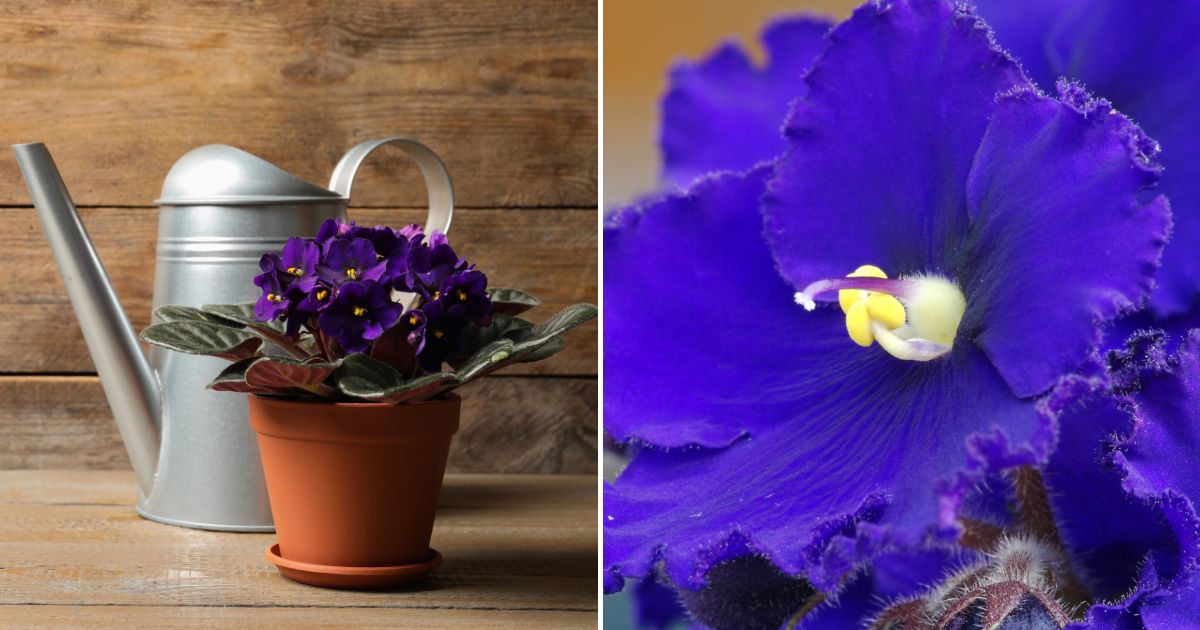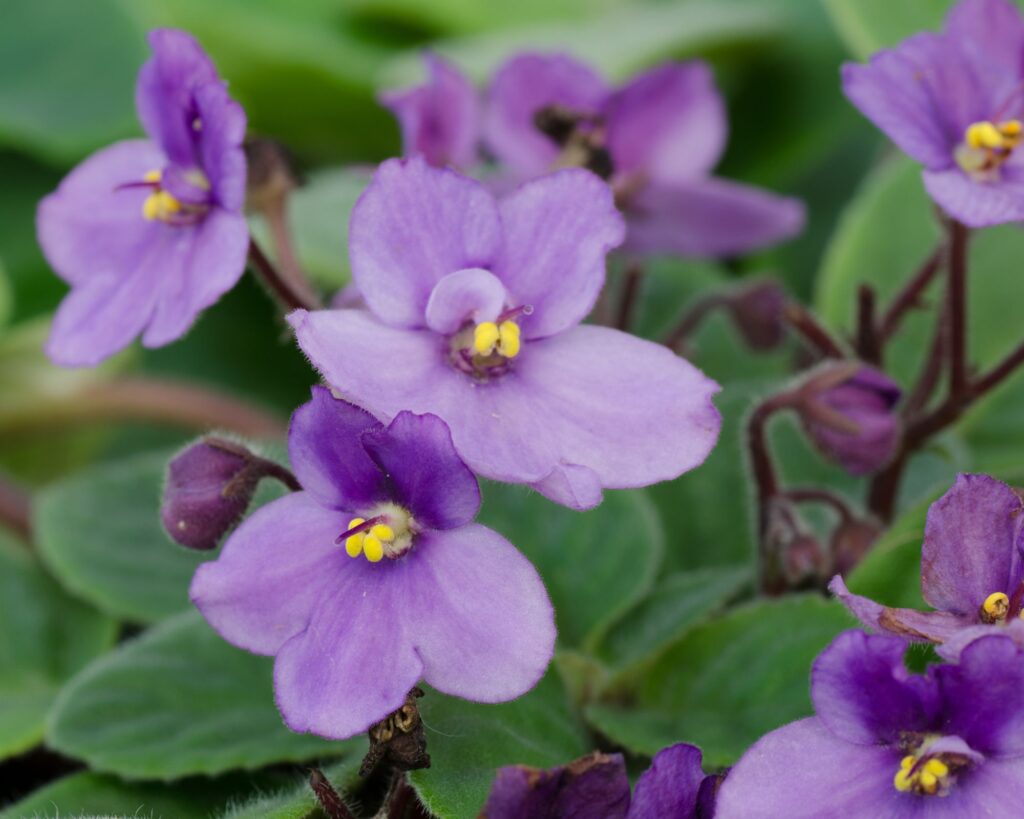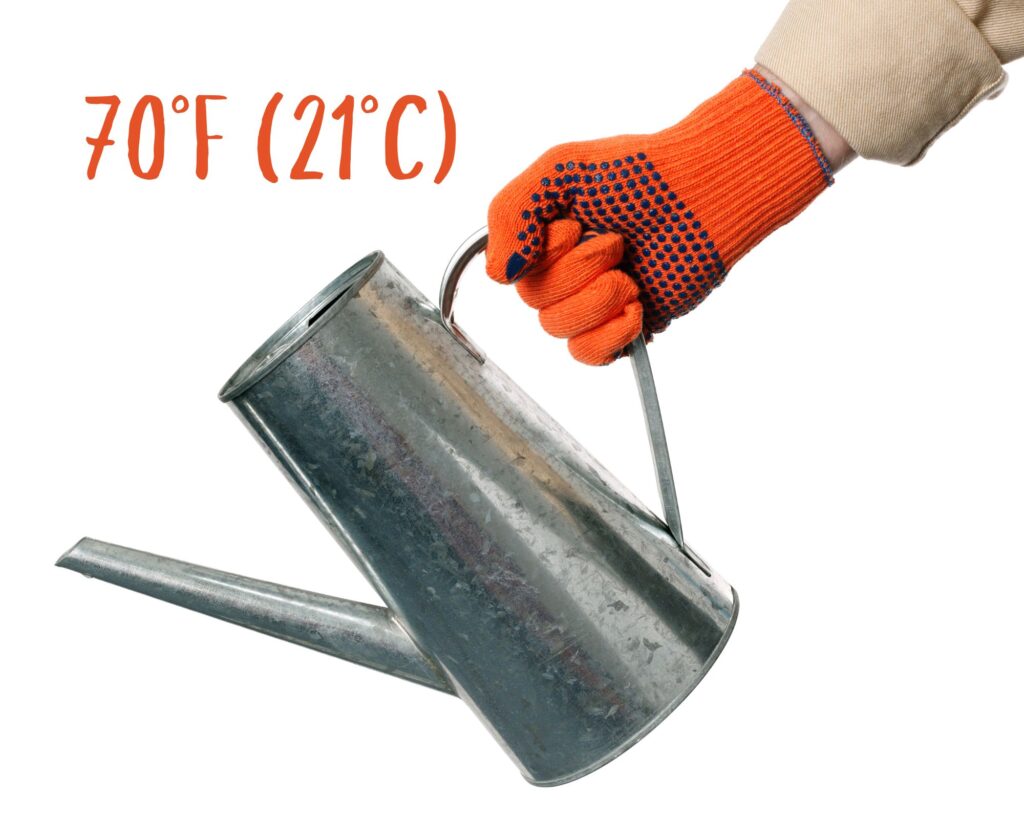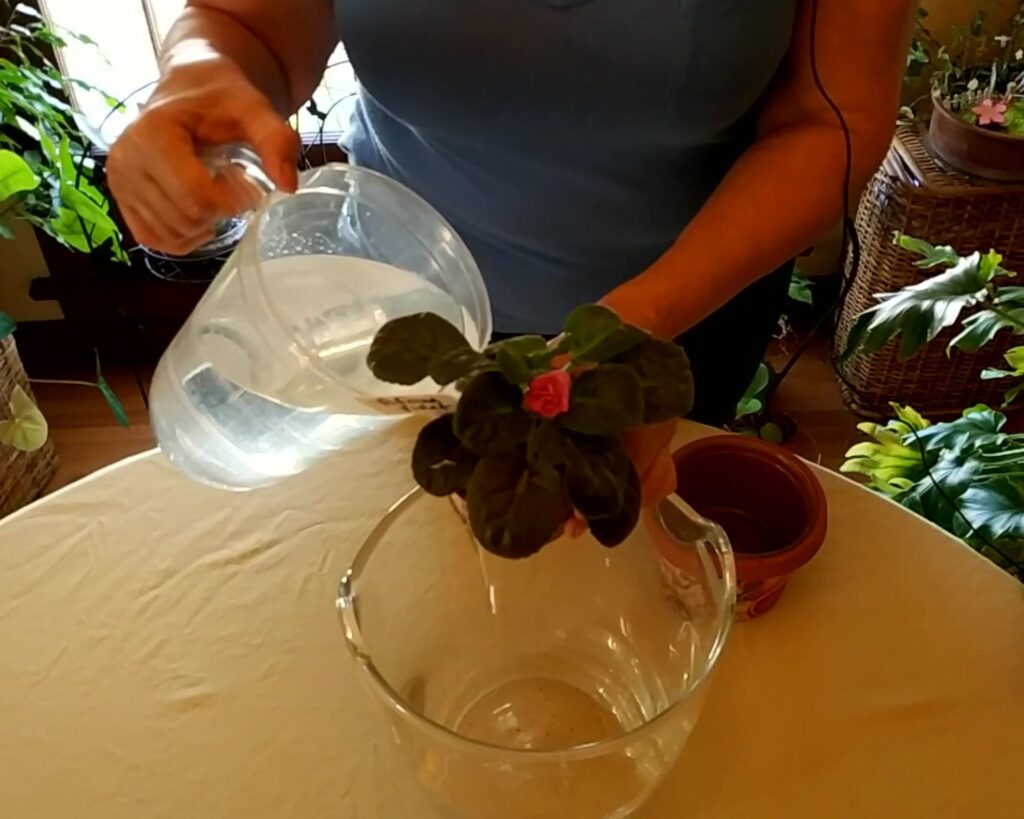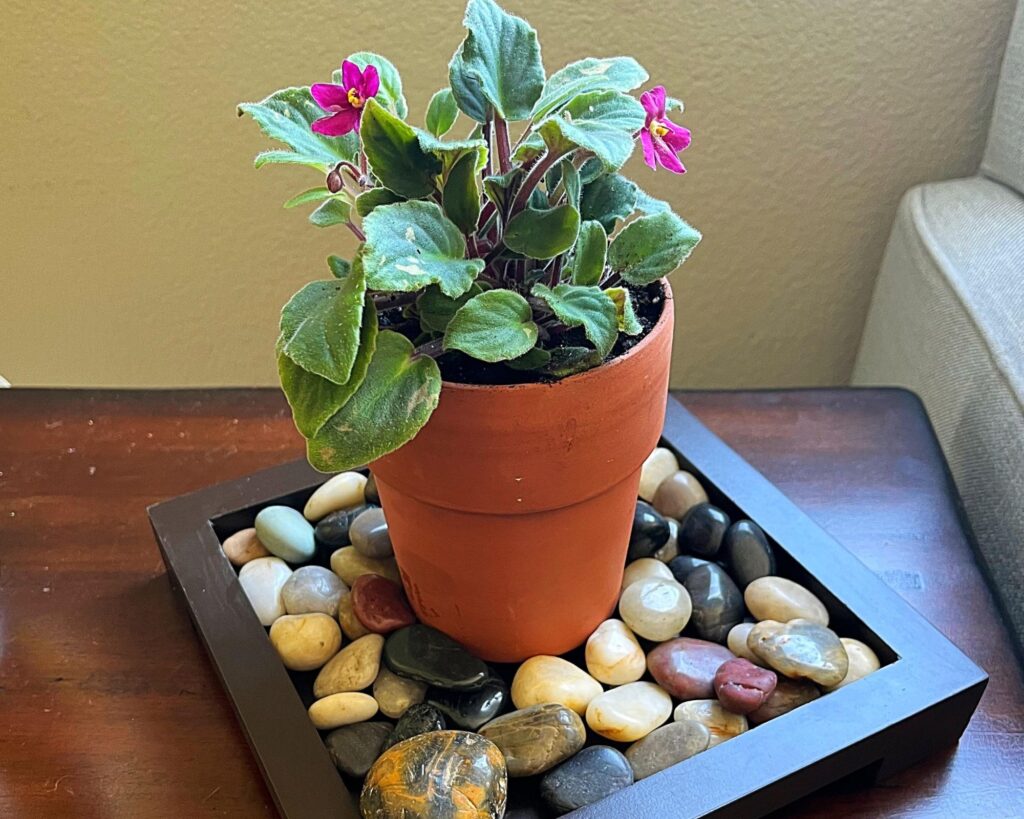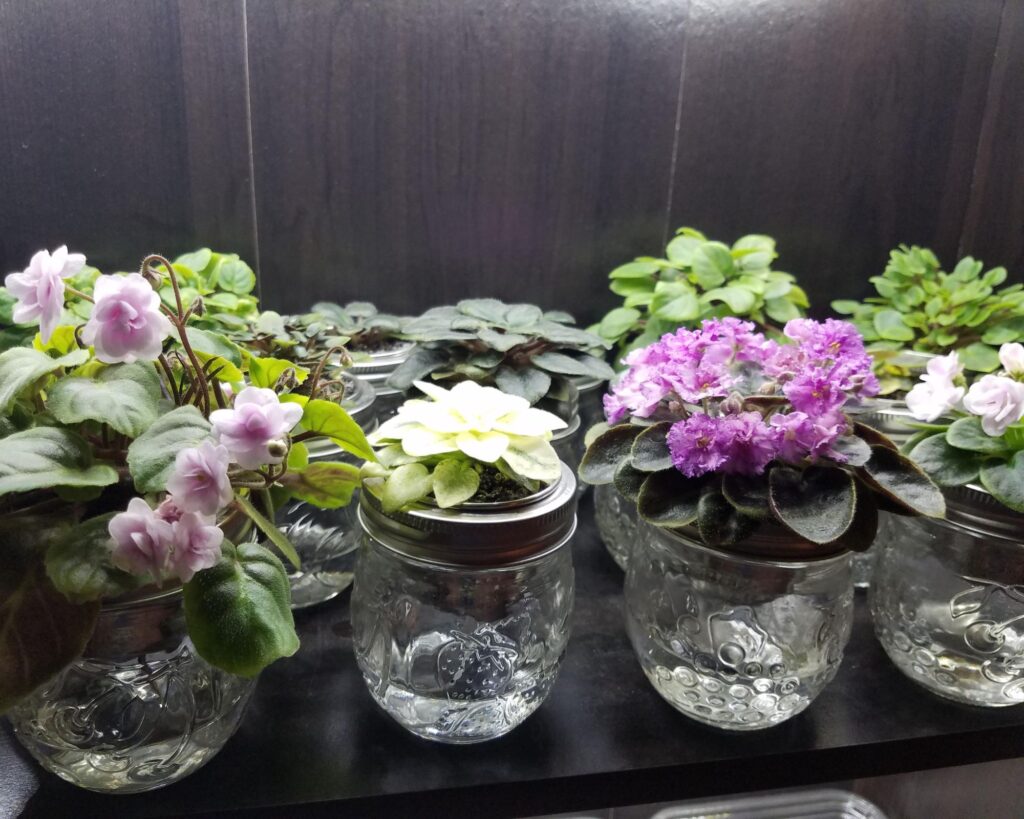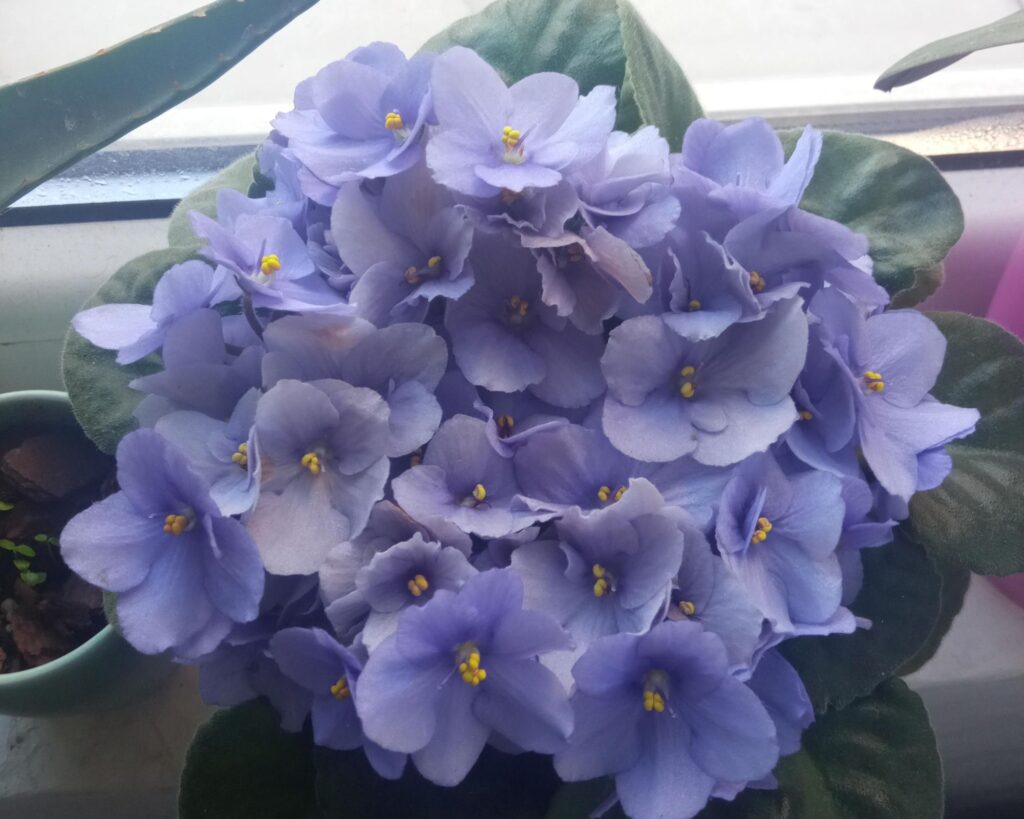Growing African violets is incredibly rewarding, but mastering the perfect watering technique can be a bit of a puzzle. Here’s a game-changer: the key to flourishing African violets is bottom watering. This method not only keeps the leaves dry, preventing unsightly spots and diseases but also ensures your plant gets the exact hydration it needs.
Picture this: you place the pot in a shallow dish of water and watch as the roots soak up the moisture, perfectly balancing hydration without oversaturation. Intrigued? Let’s dive into why this method is so effective and how it can keep your African violets thriving.
Understanding African Violets
African Violets are popular houseplants known for their delicate flowers and fuzzy leaves. Proper watering is essential to keep these plants healthy and blooming.
Characteristics of African Violets
African Violets (Saintpaulia) are small, flowering plants typically found indoors. They have round, fuzzy leaves and vibrant flowers that can be purple, pink, white, or blue. These plants thrive in well-draining soil and bright, indirect light.
They prefer a humid environment and moderate indoor temperatures ranging from 65°F to 75°F (18°C to 24°C). It’s important to avoid getting the leaves wet, as this can cause spotting and other issues.
Signs of Improper Watering
Watering issues are common with African Violets. Overwatering can lead to root rot, evidenced by yellowing leaves and a mushy, unpleasant smell. Underwatering, on the other hand, may cause the leaves to curl and turn crispy.
Watch for brown leaf edges and poor blooming. Spotting on the leaves might indicate water splashing on them. Correct watering routines help ensure your plant remains robust and attractive.
Preparing to Water Your African Violets
Properly preparing to water your African Violets involves selecting the right type of water and ensuring it is at the correct temperature. These steps help maintain their health and prevent potential issues.
Selecting the Right Water
Using the right water for African Violets is essential. It’s best to use filtered, distilled, or rainwater. Tap water might contain chemicals like chlorine or fluoride that can harm your plants.
If you must use tap water, let it sit out for 24 hours. This allows most chemicals to dissipate. Softened water, however, should be completely avoided because it contains salts that can damage the plants.
Keep an eye on the pH level of the water, aiming for a slightly acidic range, around 6.0-6.5.
Water Temperature Matters
Water temperature plays a significant role in the health of African Violets. Cold water can shock the roots, while hot water can damage them.
Use room-temperature water, around 70°F (21°C). This ensures the roots absorb the moisture well without any stress.
When preparing the water, let it sit in the room for a while if it feels too cold or too warm. Consistently using the correct temperature can help keep your African Violets thriving.
Watering Techniques for African Violets
To keep your African Violets thriving, it’s essential to choose the right watering technique. Each method has its own benefits, and selecting the right one for your plants can make a significant difference.
Top Watering Method
Top watering involves watering the plant directly from above. Use a watering can with a long, narrow spout to avoid getting water on the leaves.
Water when the soil feels dry to the touch, but not bone-dry. Ensure the pot has drainage holes to prevent water from sitting at the bottom, which can lead to root rot. Be cautious not to splash cold water on the leaves, as it can cause spots.
Bottom Watering Method
Bottom watering allows the plant to absorb water through its roots. Fill a shallow tray with water and place the pot in it. Let the plant sit for about 20-30 minutes.
Check the soil to see if it’s moist up to the root level. This method minimizes the risk of water spots on the leaves and helps to prevent overwatering. Make sure to empty the tray of any excess water to avoid stagnation.
Self-Watering Pots
Self-watering pots can simplify the watering process. These pots have a reservoir at the bottom that holds water and a wicking system to draw moisture up to the roots.
They help maintain consistent soil moisture, reducing the risk of both overwatering and underwatering. Check the water level in the reservoir regularly and refill it when needed. This method is particularly convenient if you travel often or have a busy schedule.
Maintaining Proper Moisture Levels
Maintaining proper moisture levels is crucial for healthy and thriving African violets. It involves understanding the right frequency of watering and ensuring the correct humidity levels.
Frequency of Watering
Water your African violets when the soil feels slightly dry to the touch. This usually means watering every 5-7 days. However, this can vary based on the climate and the pot size.
It’s essential to avoid overwatering, which can lead to root rot. Use a well-draining potting mix to help prevent this issue. Bottom watering, where you place the pot in a dish of water, allows the plant to absorb what it needs.
Humidity and African Violets
African violets thrive in environments with humidity levels of 40-60%. If your home is dry, you can increase humidity by using a pebble tray. Fill a tray with pebbles, add water, and place the pot on top. This will create a more humid micro-environment.
Another option is to group your plants together, which can naturally increase the local humidity. Avoid misting the leaves directly as this can lead to spots and other issues.
Common Watering Pitfalls to Avoid
Caring for African violets requires attention to their specific water needs. Key pitfalls include overwatering, underwatering, and water quality issues. Understanding and avoiding these mistakes will help keep your plants healthy.
Avoiding Overwatering
African violets are sensitive to excess moisture. Ensure the soil is moist but not soggy. Overwatering can lead to root rot, which is fatal to the plant. Check the top inch of soil before watering; if it’s still damp, wait a day or two.
Use pots with drainage holes to prevent water accumulation at the bottom. Avoid using saucers that keep the pot sitting in water; instead, use a wick watering system or water from the bottom to let the plant absorb what it needs without sitting in excess water.
Preventing Underwatering
Conversely, underwatering can weaken African violets, causing wilting and poor growth. The soil should be kept consistently moist, not dry. If you notice the leaves becoming droopy or crispy at the edges, it’s a sign they need more water.
Water the plant thoroughly, allowing water to flow through the pot’s drainage holes. Refill the water once the top inch of the soil starts to dry out. Using self-watering pots can also help maintain a steady moisture level.
Dealing With Water Quality Issues
Water quality significantly impacts African violets. Hard water with high mineral content can leave residues on the soil and leaves, hindering growth. Use filtered or distilled water to avoid these issues.
Avoid cold water, as it can shock the roots. Keep water at room temperature. If using tap water, let it sit out for 24 hours to allow chlorine to dissipate. This simple step can make a big difference in your plant’s health.
Successfully growing African violets requires careful attention to their unique watering needs. With these techniques, your plants will thrive, rewarding you with their vibrant blooms and lush foliage.
Ready to see your African violets at their best? Follow these watering tips, and enjoy the beauty and satisfaction of healthy, thriving plants.
